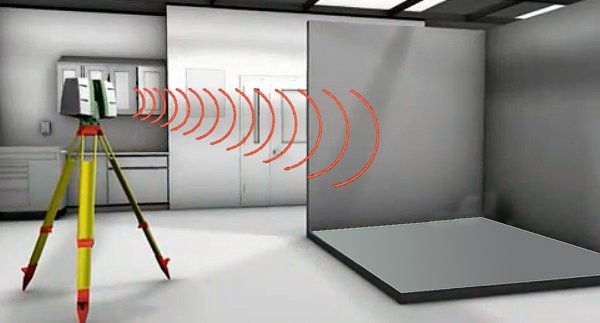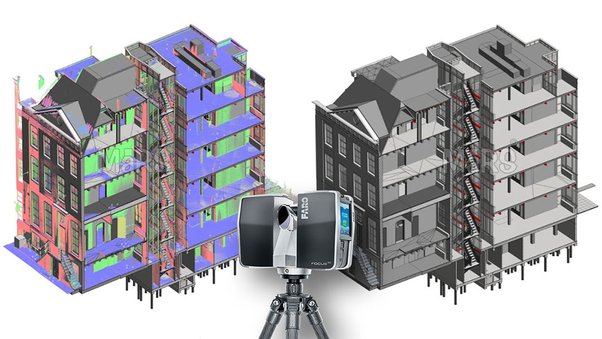The Evolution of Building Information Modeling with Scan to BIM
 Zara Anderson
Zara Anderson
The construction industry has experienced a significant transformation in recent years with the integration of advanced technologies. One of the key changes has been the shift from traditional methods to digital solutions, particularly in Building Information Modeling (BIM). As the demand for more accurate, efficient, and collaborative workflows increases, Laser Scan to BIM has emerged as a pivotal technology, improving the way buildings are designed, built, and managed. This shift reshapes the construction landscape by allowing more precise modeling and better coordination among project teams. to
The Shift Towards Digital Precision in AEC

The traditional construction and renovation processes have often been hindered by manual data collection, inaccuracy, and delays. With the advent of laser scanning technology, projects can now begin with highly accurate data captured from the physical site. This digital data can be easily converted into 3D models, overcoming the challenges of traditional methods. By integrating this new technology, construction teams can ensure that designs reflect the actual conditions on the ground, reducing errors and improving the overall quality of the project.
How Scan to BIM Enhances the BIM Workflow
Improved Data Accuracy
The integration of point cloud data into BIM models ensures that the models are more accurate and reliable. This high-resolution data, captured through 3D scanning, reflects the real-world dimensions and details of the built environment, making it easier to create models that are true to the original structure. This eliminates many of the inaccuracies that can arise from manual measurements or outdated plans.Accelerated Project Timelines
Projects benefit from the speed of digital scanning, which provides quick and accurate data collection. Once the data is captured, the modeling process is significantly faster than traditional methods, reducing the time spent on site and during the design phase. This leads to shorter project timelines and quicker completion.Enhanced Collaboration Across Teams
With Scan to BIM, project teams can work with up-to-date, shared 3D models, ensuring all stakeholders are on the same page. The ability to access a single, accurate model in real time makes it easier for architects, engineers, contractors, and other professionals to collaborate. This improves communication, reduces misunderstandings, and leads to more efficient decision-making.
Applications of Scan to BIM in Modern Construction
Renovations and Retrofits
For renovation projects, creating an accurate as-built model of the existing structure is crucial. Scan to BIM helps produce highly detailed models that can be used for planning updates, modifications, and improvements. This ensures that any changes made are precisely aligned with the current state of the building.Heritage Preservation
When working on historical buildings, Scan to BIM helps preserve important architectural features while ensuring any restoration work is accurate. Detailed 3D models provide a digital record of the building's original design, making it easier to repair or reconstruct damaged areas with precision.Clash Detection and Resolution
Clash detection, an essential part of the design process, is made more effective with Scan to BIM. Using accurate 3D models, any conflicts between architectural, structural, or MEP systems can be identified early. This allows for quicker resolution before construction begins, minimizing costly delays and rework.Facility Management
Once a building is complete, its model can be handed over to facility managers, who can use it for ongoing maintenance and future upgrades. The detailed, up-to-date models provide accurate information on the building’s systems and components, making it easier to track performance and plan necessary repairs or modifications.
The Impact of Scan to BIM on the Industry
The introduction of Scan to BIM has had a transformative effect on project execution. Architects, engineers, and contractors now have access to more precise data, enabling them to design and build with higher accuracy and efficiency. This technology has been widely adopted across various sectors, including commercial, residential, and infrastructure projects. Additionally, Scan to BIM supports sustainability goals by reducing material waste and improving resource planning.
One of the key areas where Scan to BIM has made a significant impact is in retrofit and renovation projects. Traditional methods of remodeling or upgrading existing structures often involve extensive manual measurements, which can be prone to errors. By leveraging 3D laser scanning, accurate as-built models are created, offering a precise digital replica of the existing building. This makes planning renovations and retrofits easier, reducing the chances of costly mistakes and rework.
Key Innovations Driving the Evolution of Scan to BIM
Advancements in Scanning Technologies
The tools used for scanning have advanced significantly, making it easier to capture high-quality data. Technologies such as LiDAR and drones are now widely used to gather 3D data quickly and accurately, providing a more complete picture of the site or structure.AI and Automation in Data Processing
The integration of artificial intelligence (AI) and automation has streamlined the process of converting raw scan data into usable BIM models. These tools help process large datasets quickly, reducing the time it takes to turn point clouds into detailed, accurate models.Integration with Emerging Technologies
Scan to BIM is also being combined with other innovative technologies like Virtual Reality (VR), Augmented Reality (AR), and Digital Twins. This integration allows for immersive visualization, improved project monitoring, and more effective decision-making throughout the lifecycle of a building.
Overcoming Challenges in Scan-to-BIM Implementation
Despite its many benefits, there are challenges when implementing Scan to BIM in projects. Large datasets can be difficult to manage, requiring robust software and storage solutions. Additionally, ensuring compatibility across various systems and tools is critical for smooth project execution. Training and upskilling professionals is also necessary to make the most of Scan to BIM tools, as expertise in both scanning and BIM software is required.
The Future of Scan to BIM in the AEC Industry
The future of Scan to BIM looks promising, with expectations for continued growth and technological advancements. As more projects adopt this technology, the industry is likely to see even greater improvements in efficiency, accuracy, and collaboration. Scan to BIM will play a crucial role in building smarter, more sustainable cities and structures in the years to come, particularly as the need for more accurate data and digital solutions grows.
Conclusion
Scan to BIM has truly revolutionized the way buildings are designed, constructed, and managed. This technology has made it possible to move from manual methods to faster, more accurate digital models, creating new possibilities for project teams. As the industry continues to evolve, Scan to BIM will remain a key factor in achieving smarter, more efficient building practices, paving the way for the future of construction.
Subscribe to my newsletter
Read articles from Zara Anderson directly inside your inbox. Subscribe to the newsletter, and don't miss out.
Written by
